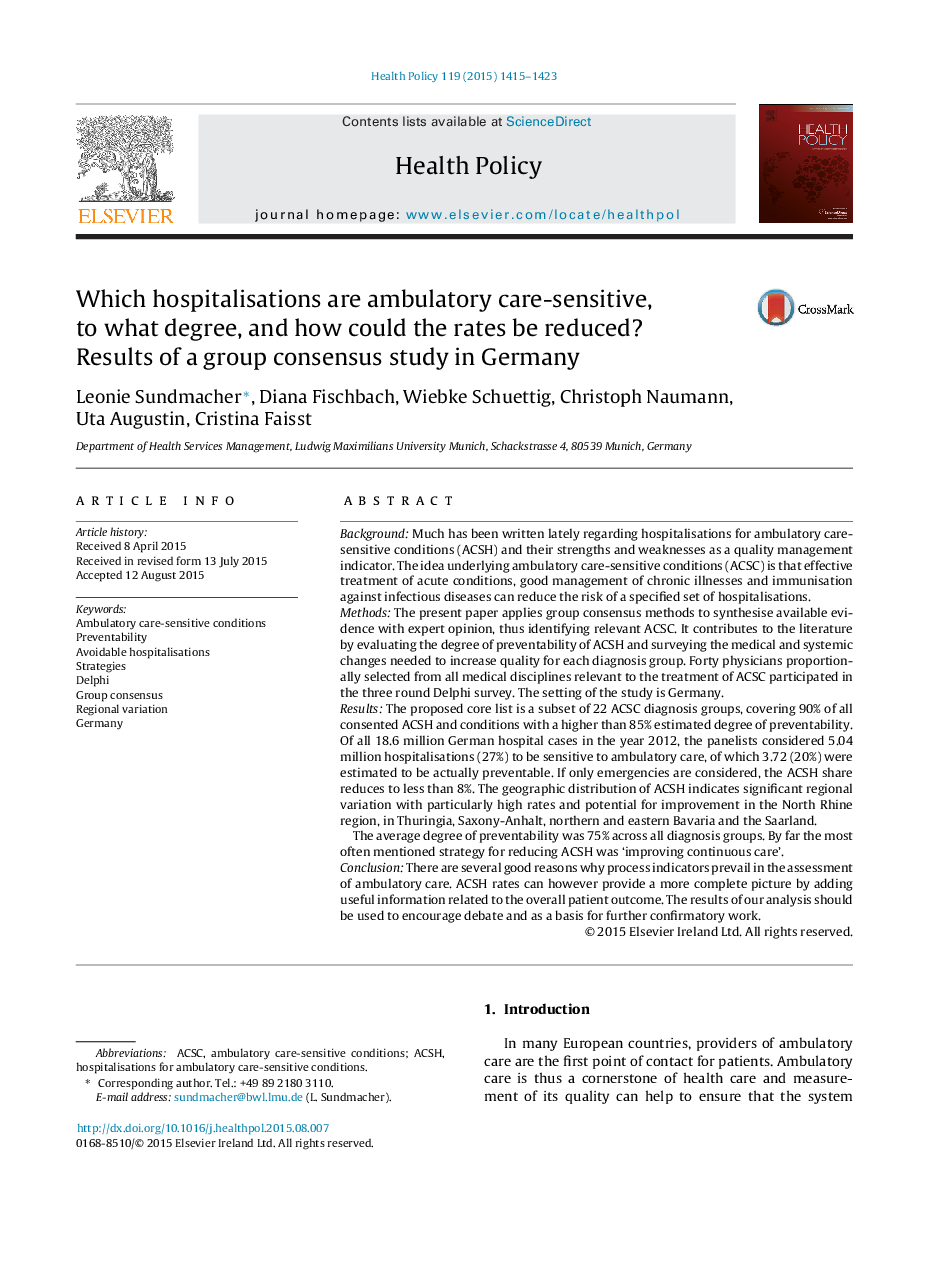| کد مقاله | کد نشریه | سال انتشار | مقاله انگلیسی | نسخه تمام متن |
|---|---|---|---|---|
| 6239079 | 1278985 | 2015 | 9 صفحه PDF | دانلود رایگان |
- The paper proposed as core list a subset of 22 ACSC diagnosis covering 90% of all consented 40 ACSH and conditions with a higher than 85% estimated degree of preventability.
- Of all 18.6 million German hospital cases in the year 2012, the panellists considered 5.04 million hospitalisations (27%) to be sensitive to ambulatory care, of which 3.72 (20%) were estimated to be actually preventable.
- Among the core ACSC, the preventability ranged from 58% for gonarthrosis to 94% for dental diseases, with an average preventability of 75% across all diagnosis groups.
- The most often mentioned strategy for reducing ACSH was 'improving continuous care'.
BackgroundMuch has been written lately regarding hospitalisations for ambulatory care-sensitive conditions (ACSH) and their strengths and weaknesses as a quality management indicator. The idea underlying ambulatory care-sensitive conditions (ACSC) is that effective treatment of acute conditions, good management of chronic illnesses and immunisation against infectious diseases can reduce the risk of a specified set of hospitalisations.MethodsThe present paper applies group consensus methods to synthesise available evidence with expert opinion, thus identifying relevant ACSC. It contributes to the literature by evaluating the degree of preventability of ACSH and surveying the medical and systemic changes needed to increase quality for each diagnosis group. Forty physicians proportionally selected from all medical disciplines relevant to the treatment of ACSC participated in the three round Delphi survey. The setting of the study is Germany.ResultsThe proposed core list is a subset of 22 ACSC diagnosis groups, covering 90% of all consented ACSH and conditions with a higher than 85% estimated degree of preventability. Of all 18.6 million German hospital cases in the year 2012, the panelists considered 5.04 million hospitalisations (27%) to be sensitive to ambulatory care, of which 3.72 (20%) were estimated to be actually preventable. If only emergencies are considered, the ACSH share reduces to less than 8%. The geographic distribution of ACSH indicates significant regional variation with particularly high rates and potential for improvement in the North Rhine region, in Thuringia, Saxony-Anhalt, northern and eastern Bavaria and the Saarland.The average degree of preventability was 75% across all diagnosis groups. By far the most often mentioned strategy for reducing ACSH was 'improving continuous care'.ConclusionThere are several good reasons why process indicators prevail in the assessment of ambulatory care. ACSH rates can however provide a more complete picture by adding useful information related to the overall patient outcome. The results of our analysis should be used to encourage debate and as a basis for further confirmatory work.
Journal: Health Policy - Volume 119, Issue 11, November 2015, Pages 1415-1423
